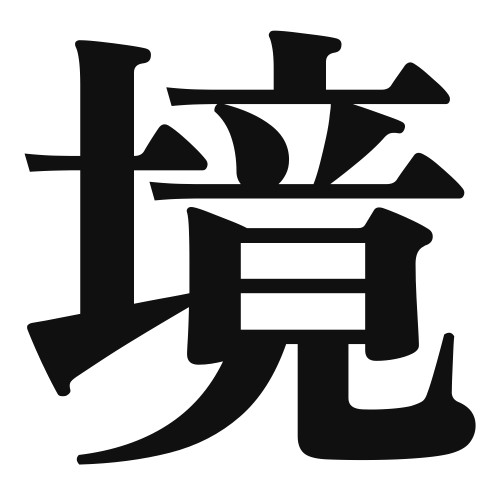1. Overview of Meaning
The kanji “境” (kyou) means “boundary” or “border.” It represents the concept of a dividing line or a limit between two areas, whether physical, emotional, or metaphorical.
2. Formation and Radical
Formation of the Kanji: The kanji “境” is a compound character, which combines the elements of “土” (earth) and “京” (capital). This combination suggests a place where the earth meets a significant area, symbolizing a boundary.
Radical: The radical of “境” is “土” (tsuchi), which relates to earth or land, emphasizing its connection to physical boundaries.
3. Examples of Usage
Common Words and Phrases: Some frequently used words that include “境” are “境界” (kyoukai – boundary), “境遇” (kyougu – circumstances), and “境内” (keidai – precincts).
Example Sentences in Daily Conversation:
- 私たちは国境を越えました。 (Watashitachi wa kokkyou o koemashita.) – We crossed the border.
- 彼の境遇は私とは全く違います。 (Kare no kyougu wa watashi to wa mattaku chigaimasu.) – His circumstances are completely different from mine.
4. Synonyms and Antonyms
Similar Kanji: A similar kanji is “限” (gen), which means “limit.” While both refer to boundaries, “境” often implies a physical or metaphorical separation, whereas “限” focuses more on restrictions or limits.
Opposite Kanji: An antonym for “境” could be “融合” (yuugou), meaning “fusion” or “integration,” which suggests the merging of boundaries rather than their separation.
5. Cultural and Historical Background
Relation to Japanese Culture: The concept of “境” is significant in Japanese culture, often reflecting the importance of boundaries in nature, society, and personal relationships.
Proverbs and Idioms: One common saying is “境を越える” (sakai o koeru), which means “to cross boundaries,” often used to describe overcoming obstacles or limitations in life.
